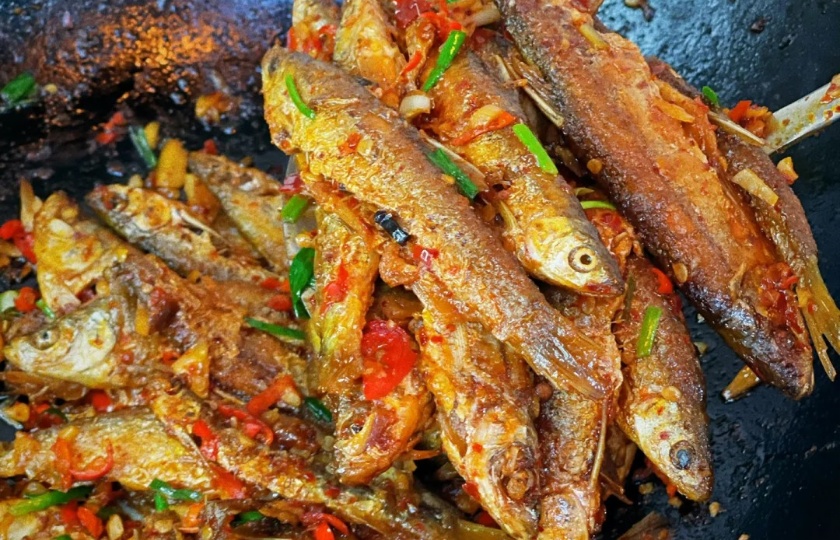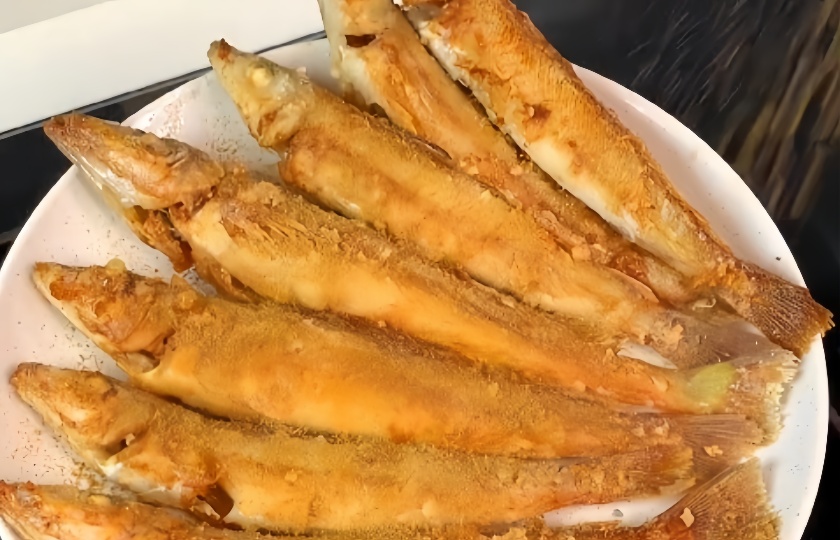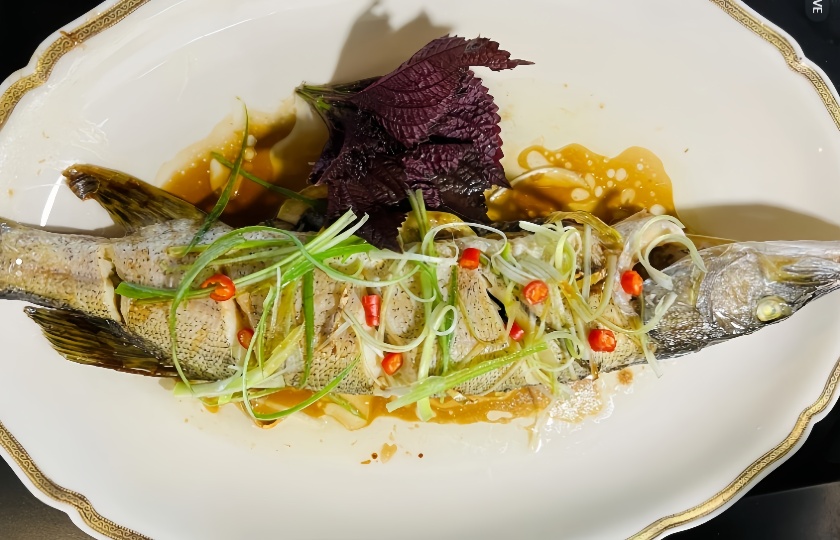Kitchen Curiosity: Does Pressure Cooking Pike Remove the Bones from It?
 Hey everyone! Do you also have this dilemma: you love eating fish, but you're always worried about getting a bone stuck in your throat? Especially with barracuda, which has so many bones it can be a real headache. Did you know that pressure cooking can make barracuda incredibly tender and juicy in no time? But there's one little detail many of you might be curious about—does pressure cooking get rid of the bones? Don't worry, I'm here to reveal the truth!
Hey everyone! Do you also have this dilemma: you love eating fish, but you're always worried about getting a bone stuck in your throat? Especially with barracuda, which has so many bones it can be a real headache. Did you know that pressure cooking can make barracuda incredibly tender and juicy in no time? But there's one little detail many of you might be curious about—does pressure cooking get rid of the bones? Don't worry, I'm here to reveal the truth!
How to deal with fish bones when pressure cooking pike?
Pressure cooking barracuda won't directly remove the bones. The main benefit of pressure cooking is that it makes the fish meat more tender and juicy, but the bones will still be there.
However, we can take some steps before pressure cooking to make dealing with the bones easier. For instance, you can slice the fish into thinner pieces, which allows the meat to cook through more easily and makes it simpler to avoid the bones while eating.
Alternatively, you can choose parts of the barracuda that naturally have fewer bones for pressure cooking, which can reduce the chances of encountering bones while enjoying your meal.
So, while pressure cooking can definitely enhance the deliciousness of barracuda, removing the bones still requires a bit of prep work on our part.
How do you remove the y bones from northern pike?
The "Y" bones in Northern Pike are quite small, but there are some handy techniques for removing them.
First, you can use the filleting method. After cleaning the Northern Pike, take a sharp knife and cut behind the head, then run the knife along the spine to fillet the fish, trying to keep the flesh intact. This way, some of the "Y" bones will stay with the fish's skeleton, and the distribution of "Y" bones in the filleted meat will be simpler. Lay the filleted fish flat on a cutting board in a well-lit area, as the "Y" bones are semi-transparent and easier to see with good lighting.
Next, use a pair of tweezers or a toothpick to remove the "Y" bones. If using tweezers, gently grasp one end of the "Y" bone and slowly pull it out. If using a toothpick, insert it under the "Y" bone and carefully pry it out. This process requires patience and a gentle touch to avoid breaking the fish flesh.
You can also try using a knife to remove the bones. Place the fish on the cutting board and lightly run the knife over the flesh. When you feel the "Y" bone, tilt the knife so one side of the blade is against the bone, then slowly separate the bone from the meat. This method requires some knife skills, but with practice, it can be an efficient way to remove the "Y" bones.

Does pressure cooking soften bones?
Pressure cooking can indeed soften bones. The principle behind a pressure cooker is to increase the pressure and temperature inside the pot, which speeds up the cooking process. In this high-pressure, high-temperature environment, components like moisture, fats, and collagen in the ingredients are released and transformed more thoroughly, significantly altering the texture and flavor of the food.
For bones, pressure cooking can make the collagen and other connective tissues softer and more brittle. This is because the high pressure and temperature break down the fibrous structure of the bones, making them easier to decompose and digest. As a result, bones cooked under pressure—whether ribs, large bones, or fish bones—become much softer, sometimes achieving a "fall-off-the-bone" tenderness.
Of course, the cooking time is crucial. If it's too short, the bones may not be soft enough; if it's too long, they might become overly mushy and lose their texture. Therefore, during the cooking process, it's important to adjust the time based on factors like the type, size, and texture of the ingredients.
Does pike have a lot of bones?
The number of bones in pike can vary depending on the species and their environment. Generally speaking, pike don't have an excessive number of bones, especially compared to some other fish.
Pike have a long, cylindrical body that is flattened at the front and tapered at the back. They have a short, broad head and a flat back. This body structure results in a relatively even distribution of bones, which aren't overly dense. Of course, pike do have some main bones, like the spine and ribs, but these can usually be easily removed or softened during cooking.
When cooking pike, there are methods to minimize the inconvenience of bones. For example, using a pressure cooker can make the bones much softer, making them easier to separate from the meat. Additionally, pre-treating the pike by removing parts like the head, fins, and tail can also reduce the number of bones.

Does vinegar soften fish bones?
Vinegar can help soften fish bones to some extent, but its effectiveness is limited and depends on certain conditions.
Composition of Vinegar:
Vinegar contains acetic acid, which can react with calcium, the main component of fish bones.
Direct Consumption:
Drinking vinegar directly to soften fish bones isn't very effective in daily life because the concentration and contact time are limited.
Cooking Benefits:
When cooking, such as making fish soup or braised fish, adding a bit of vinegar can help soften the bones, making the fish more tender and the broth richer.
Influencing Factors:
The degree to which fish bones are softened depends on various factors like the concentration of vinegar, cooking time, and the type and size of the bones.
Safety Tips:
While vinegar can help soften bones, caution is still needed when eating, especially for children or the elderly, to ensure bones are properly handled and avoid choking hazards.
Cooking Tip:
Adding vinegar during cooking not only softens fish bones but also enhances the dish with a tangy flavor and aroma, improving the overall taste.
For better results in softening fish bones, try using a pressure cooker along with some vinegar for an enhanced effect!
What makes meat more tender pressure cooking or slow cooking?
For barracuda, both pressure cooking and slow cooking can tenderize the meat, each with its own characteristics.
Pressure Cooking
Principle and Process: Pressure cooking raises the boiling point and temperature above 212°F (100°C), causing the fish proteins to quickly denature and collagen to break down into gelatin. This process takes about 15-30 minutes to tenderize the fish.
Texture and Flavor: The meat becomes soft and slightly springy, with a rich flavor that absorbs seasonings well. The bones also soften, making it easier to eat.
Slow Cooking
Principle and Process: Slow cooking at a low temperature (140-176°F or 60-80°C) allows fish proteins to slowly denature and collagen to gradually convert into gelatin over 1-2 hours, ensuring even tenderness throughout.
Texture and Flavor: The meat is delicate and silky, retaining its original flavor with a pleasant elasticity, almost melting in the mouth. However, it requires specialized equipment and is more time-consuming.
In summary, if you want quick tenderness, choose pressure cooking. For a refined, original taste, opt for slow cooking.























